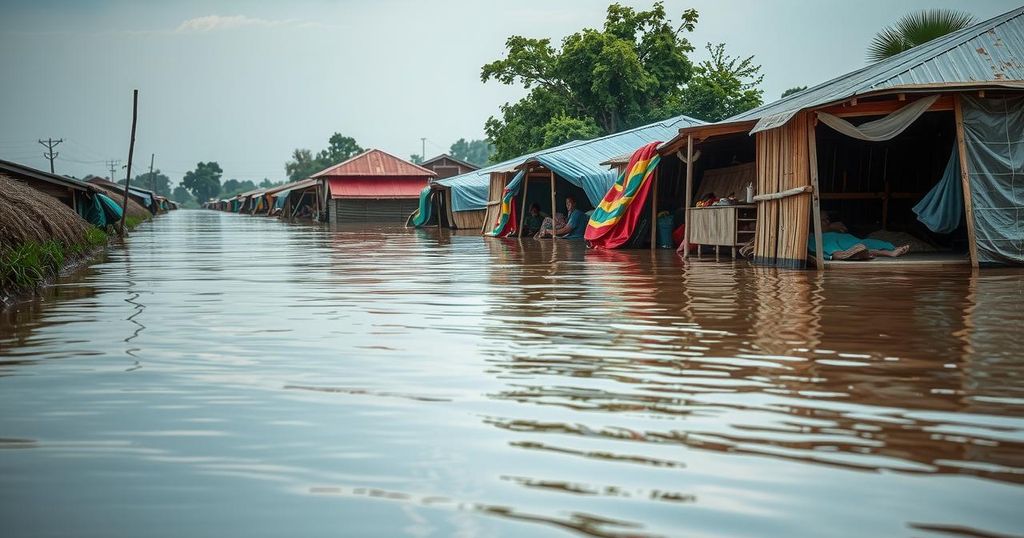Annual Flooding Crisis in South Sudan Threatens Communities Along Jonglei Canal
Annual flooding in South Sudan has led tens of thousands to live precariously along the Jonglei Canal. While seasonal floods have traditionally formed part of local life, they now pose existential threats, submerging homes, destroying farmland, and risking health hazards, such as encounters with dangerous wildlife. Community members face significant challenges in accessing healthcare amid these conditions.
In South Sudan, annual flooding has escalated into a severe humanitarian crisis. Tens of thousands of individuals have been forced to inhabit perilous makeshift settlements on the limited high ground alongside the Jonglei Canal. Historically, seasonal flooding was a common aspect of life for pastoral communities surrounding the Sudd, Africa’s largest wetland. However, the relentless expansion of this swamp is now inundating villages, devastating agricultural lands, and leading to the loss of livestock, significantly threatening local livelihoods. Residents often recount harrowing experiences as they traverse treacherous waters, emphasizing the danger posed by poisonous snakes while attempting to reach essential medical care.
The flooding crisis in South Sudan results from climatic changes and geographic vulnerabilities, which have intensified over recent years. The Sudd wetland and surrounding areas historically relied on seasonal floods as part of the agricultural cycle. However, with rising water levels, many communities face displacement and resource scarcity, exacerbating their already precarious living conditions. The influx of displaced populations into makeshift communities has created urgent humanitarian needs that challenge local and international assistance efforts.
In conclusion, the persistent flooding in South Sudan has reached alarming levels, threatening the very existence of numerous communities. The increasing frequency and intensity of these floods not only jeopardize livelihoods but also exploit residents to health hazards while navigating submerged terrain. To address this ongoing crisis, it is vital for local and international stakeholders to enhance support and devise sustainable strategies that respond to the humanitarian needs of the affected populations.
Original Source: apnews.com




Post Comment